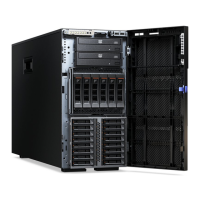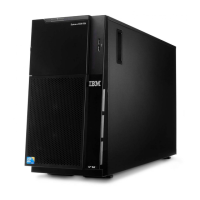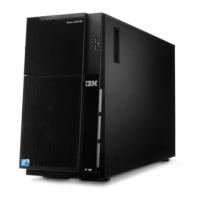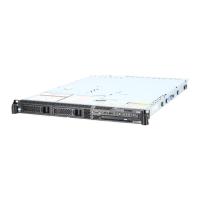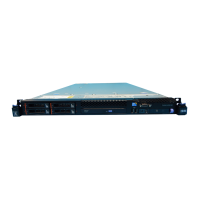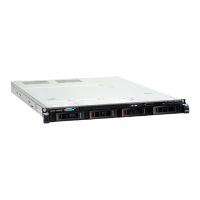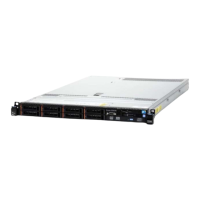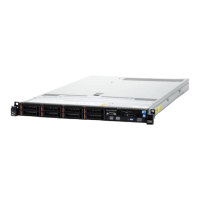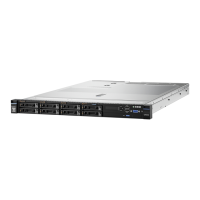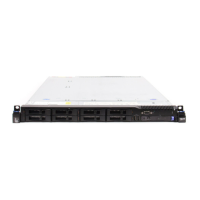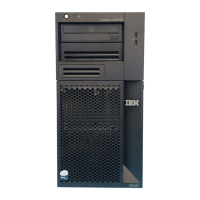v Automatic Server Restart (ASR) logic supporting a system restart when the
operating system becomes unresponsive
v Automatic server restart after a power failure, based on the BIOS setting
v Availability of microcode level
v Boot-block recovery
v Built-in, menu-driven setup, system configuration, and redundant array of
independent disks (RAID) configuration
v Built-in monitoring for fan, power, temperature, and voltage
v CD-based diagnostic programs
v Cooling fans with speed-sensing capability
v Customer support center that is available 24 hours a day, 7 days a week
2
v Diagnostic support of ServeRAID adapters
v Error codes and messages
v Error correcting code (ECC) double-data-rate (DDR) synchronous dynamic
random access memory (SDRAM) with serial presence detect (SPD)
v Error logging of POST failures
v Hot-swap SAS hard disk drives
v Integrated Ethernet controllers
v Intelligent Platform Management Interface (IPMI) 2.0
v Support for the optional IBM Remote Supervisor Adapter II SlimLine
v Key-lock support for physical security
v Memory change messages posted to the error log
v Power-on self-test (POST)
v Predictive Failure Analysis
®
(PFA) alerts
v Read-only memory (ROM) checksums
v Redundant Ethernet capabilities (requires an optional Ethernet adapter) with
failover support
v Standby voltage for system-management features and monitoring
v System auto-configuring from the configuration menu
v System-error LED on the front bezel and diagnostics LEDs on the system board
v Upgradeable microcode for POST, BIOS, and read-only memory (ROM) resident
code, locally or over a LAN
v Vital product data (VPD); includes serial-number information and replacement
part numbers, stored in nonvolatile memory, for easier remote maintenance
v Wake on LAN
®
capability
IBM Director
With IBM Director, a network administrator can perform the following tasks:
v View the hardware configuration of remote systems, in detail
v Monitor the usage and performance of critical components, such as
microprocessors, disks, and memory
v Centrally manage individual or large groups of IBM and non-IBM
Intel-processor-based servers, desktop computers, workstations, and notebook
computers on a variety of platforms
2. Service availability will vary by country. Response time varies; may exclude holidays.
6 IBM System x3500 Type 7977: User’s Guide
